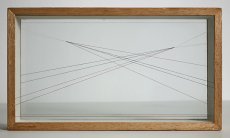
Paule Vézelay: Lines in Space No.30 (1953), construction.
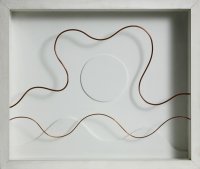
Paule Vézelay: Lines in Space No.46 (1965), construction.
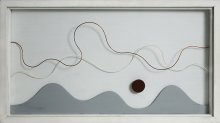
Paule Vézelay: Lines in Space No.45 (1965), construction.
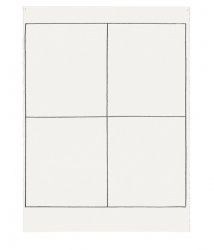
Linda Karshan: On a Clear Day 17 17.08.06 (2006), graphite on Arches paper.
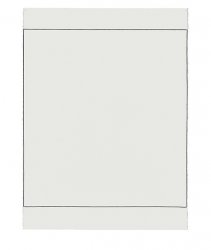
Linda Karshan: 13.10.06 1 (2006), graphite on Arches paper, 29.9 x 22.4 ins.
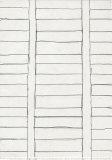
Linda Karshan: 14/6/01 (3) (2001), graphite on paper.
In the Gallery: 27 February–3 April 2010
Lines in Space
Paule Vézelay + Linda Karshan
Paule Vézelay, a British pioneer of the early abstract movement in Paris, developed ideas of ‘lines in space’, starting a series of three-dimensional constructions of that name in 1935. In subtle contrast, the intuitive, apparently minimal abstract drawings of contemporary artist Linda Karshan are ‘more attuned to concepts of time than of space’.
In L’Art Abstrait, Marcel Brion described how Paule Vézelay made a profound study of the painted line, searching for ‘a spatially autonomous line… trying to draw it out of the flat surface plane. This was achieved when she used line in conjunction with pure space… that is to say, a line which has become a reality in itself, no longer merely a visual illusion…’. Interviewed by the BBC in 1983, the year before she died, Vézelay explained that ‘you have got to work hard to be an artist. It takes a long time to control your hand and make your hand obey anything you want in a line. A line is extraordinary. It can be dark or light or curved or straight, and it can be a lively line, it can be a dull line, but you’ve got to be able to control it with your hand, and that takes years of practice… you can draw a line on paper in two dimensions, but it’s more interesting if you put it into space…’.
The discipline and rigor inherent in Vézelay’s approach to making a line is paralleled today in the work of Linda Karshan. Karshan uses the discipline and energy of dance to make her black and white drawings, using graphite sticks and pacing out steps during the drawing process to create her characteristic lines, marks and grids. She combines her formal grid structures with a very personal marking system. In a recent catalogue, Jill Lloyd describes how ‘the vertical, rectangular format of her grid has always been associated in the artist’s mind with a human body standing gracefully upright and alert. These anthropomorphic associations… are one of many aspects that differentiate Linda Karshan’s highly individual work from the mainstream of Minimal Art… The graphite strokes she intuitively transmits to her page mark out the beat of time, and the length of the lines in her drawings are literally a measure of the time they took to be made.’
Paule Vézelay recalled that ‘In Paris in 1935, I began what I described as my Recherches en Trois Dimensions, Tableaux de Fils et Ficelles tendus. I first made small wooden cases into which I stretched fishing lines, cotton threads and fine cord, these formed straight lines and contrasting angles in space… I was soon using various kinds of wire, which gave me three-dimensional lines, which could be curved or undulated in any direction I desired, retaining the curves they had been given. So it was that with stretched threads and curved wires I had my two lines, the Straight line and the Curved line, composed in the element of Space. My ‘Lines in Space’ created a third element by casting their shadows, and these changing delicate echoes seemed to add depth and light and beauty to the whole construction. They had, as all shadows have for me, a quality of magic.’
Linda Karshan, born in the USA in 1947, has been based in London since 1968. She exhibits in Europe and America, and major museum exhibitions have included Sir John Soane’s Museum, London; Institute Valencia d’Art Modern; Kettle’s Yard, Cambridge; Tang Museum, Saratoga Springs, NY. Her work is held in numerous international public collections including the British Museum; Tate; The Arts Council Collection; Ashmolean Museum; IVAM, Valencia; Staatliche Graphische Sammlung; Walker Art Center, Minneapolis; Fogg Museum, Boston; and the Folkwang Museum in Essen.
Paule Vézelay (1892-1984) was born in England, but by the 1930s had become an active member of the Parisian avant-garde after moving to France and adopting the name Paule Vézelay. She mixed with many of the most significant artists of pre-war Paris, and was invited to join the group Abstraction-Création in 1934, consequently exhibiting in significant early exhibitions of non-figurative art in Europe. After returning to England in 1939, she virtually disappeared from public view until the Tate Gallery retrospective exhibition of her work in 1983. Museums collections include Tate; British Museum; Imperial War Museum; National Portrait Gallery, London; Victoria & Albert Museum; Ashmolean Museum; Australian National Gallery; and the Kunst Museum, Basel.
Gallery hours: Monday – Saturday 11 – 6
View artists’ pages:
Paule Vézelay
Linda Karshan
